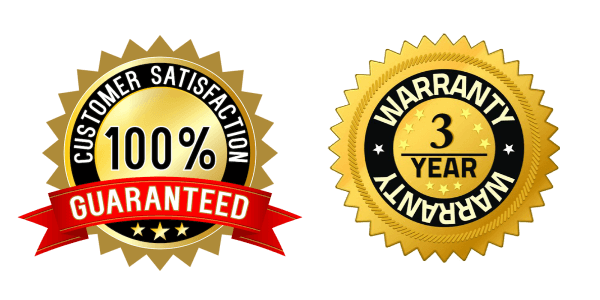Whitewash vs. Limewash – What’s the Difference?
As you’re thinking about options for updating the finishes in your home before placing it on the market, you may have wondered what painters near me say about the difference between limewashing and whitewashing. The terms are often used to describe the same thing, but they are actually different processes. Each has its own advantages and disadvantages that will impact its performance in a given application.
With years of experience in home painting services in Virginia Beach VA, Hughes Painting has the background knowledge to help you figure out which one will give you the best outcome–and the most added value–for your project. Here’s how the professionals break it down.
The Process of Whitewashing
Simply put, whitewashing is the use of water-based paint mixed with water to treat a surface. The application is usually done in several layers using a large, soft-bristled paint brush. Whitewashing helps soften natural colors in surfaces like brick and wood. This gives them the look of having been naturally weathered over many years, even when the materials are new. If desired, the whitewash can be partially wiped away with a cloth rag during the process to allow more of the original surface to shine through.
It’s important to note that whitewashing is an accurate description of the color! Limewashing can be done with other colors, but whitewashing is just that: White. It’s also important to understand several other important features of whitewashing:
• It can be used on indoor or outdoor surfaces.
• You can apply it on smooth or rough surfaces and helps to even them out.
• Application is very easy.
• Whitewashing dries quickly.
• When used on surfaces with old paint, previous applications should be sanded away to allow whitewash to penetrate the surface.
• A satin polyurethane or water-based sealant with a matte finish can be applied over whitewashing to extend its life.
• With proper application, whitewashing can last 20 to 30 years.
The Process of Limewashing
Unlike whitewashing, which uses paint, limewashing is done with a mineral product. Limestone is pulverized, burned, and mixed with water to create a putty. After the putty ages for a certain length of time, it is mixed with water. The result is a paint that yields a unique and distinctive look, a mottled appearance that has a texture similar to chalk.
Limewash has greater versatility in color through the use of natural pigments that alter the natural white of the source limestone. Limewash can be gray or shades of brown, helping you make a better match with your existing palette or with new colors you’re adding elsewhere on the project.
Some other things you should know about limewash include:
• It works on both indoor and outdoor surfaces.
• Its high pH makes it hypoallergenic.
• It resists odor, moisture, insects, and fungi.
• It increases weather resistance of surfaces where it’s applied.
• It can actually be removed up to five days after application.
• Limewash is particularly effective on porous surfaces like plaster and masonry.
• With an application of mineral-based primer, limewash can also be applied to drywall.
• Limewash will not peel or chip if it’s been properly applied, but you may have to touch up a spot after five years or so.
The application process for limewash is fairly simple. Use a masonry paintbrush to apply limewash and go to an inconspicuous area to make some test applications first so that you’ll see what the color will be after it dries. Because lime is a natural material, there is considerable variation in its color. Remember that you’re not applying computer-matched paint when you limewash. Make several thin coats instead of a single thick coat. Feather your strokes to smooth the surface.
One More Option to Consider for a Vintage, Weathered Finish
If neither whitewash nor limewash sounds like the right fit for your project, you might consider a mortar wash. Also known as a German smear, this process uses an application of white mortar on brick or other surfaces to yield a different type of rustic finish.
In coastal areas like Virginia Beach, homeowners often want home painting services to provide a naturally aged look without the actual aging of the materials. Any of these three options could be the right choice for you. Whichever option you choose, let Hughes Painting help you out. Our experience, tools, and quality products are the best available in the Virginia Beach VA metro area. Call us at (757) 317-3735 to get started planning your beautiful new project.
[facebook-reviews-pro page_name="Hughes Painting, Inc." page_id=180657965601074 page_access_token=EAAVVPjFKgSEBAFdQ9Ukc6RflTux3ZBGFZCJPgdPi2TgHQNRc39p3ZAGRw63nGJ6YrXub9zDSD1Dz0ees4wNxQV0C9z4VZAd7PGbWO8Jeo9vKMJYKVYLjWzQV578DQdeqknJ531VnSUVTTrkCVDp6Jme0L8x4X2kQoYlot6ClEvydIytu3VB8bAdQW0t3lLsZD rating_snippet=true pagination=5 text_size=120 view_mode=badge_inner open_link=true nofollow_link=true show_success_api=true lazy_load_img=true cache=24]
Request Your Quote!

